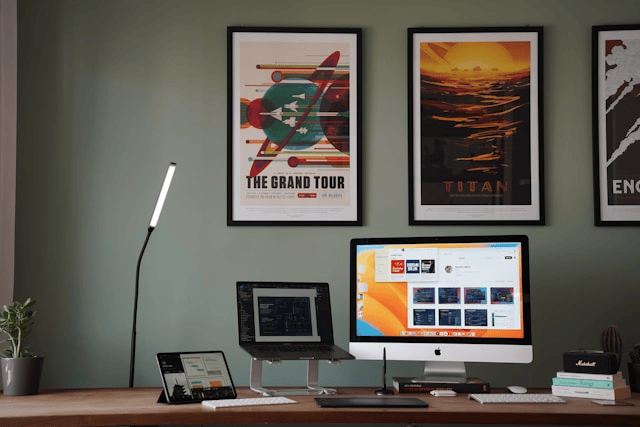In today’s competitive world, having a strong online presence is more important than ever. Whether you are a freelancer, job seeker, or creative professional, a digital portfolio can help you showcase your skills, achievements, and projects to potential clients or employers. This guide will walk you through everything you need to know about how to create a digital portfolio online, from choosing the right platform to designing it for maximum impact.
Why You Need a Digital Portfolio
A digital portfolio is more than just a collection of your work it’s a powerful marketing tool. It allows you to:
-
Showcase your skills and expertise with real examples
-
Build trust and credibility with potential employers or clients
-
Make your work easily accessible anytime, anywhere
-
Stand out from competitors in your industry
For creatives such as designers, photographers, and writers, an online portfolio is often the first impression you make. Even for non-creative professionals, having a personal portfolio website can give you a significant edge in job applications and networking.
Decide the Purpose and Audience
Before you start building your digital portfolio, define its main goal. Ask yourself:
-
Who is my target audience? (Recruiters, clients, collaborators)
-
What type of work do I want to showcase?
-
Do I want to focus on personal branding, job applications, or client acquisition?
Having clarity on your purpose will help you decide what projects to include and how to present them effectively.
Choose the Right Platform
The platform you choose will determine how easy it is to build and manage your portfolio. Some popular online portfolio platforms include:
-
Behance – Ideal for designers, photographers, and illustrators
-
Wix – Easy-to-use website builder with customizable templates
-
WordPress – Highly customizable for blogs and portfolios
-
Squarespace – Professional templates and responsive design
-
Adobe Portfolio – Great for creatives with an Adobe subscription
When choosing a platform, consider factors like ease of use, customization options, storage space, SEO features, and whether you want a free or paid option.
Plan and Organize Your Content
Your digital portfolio should highlight your best work not every single project you’ve ever done. Focus on quality over quantity. Group similar projects together, and provide short but detailed descriptions for each one. Explain the goals, your role, and the results achieved.
A clear structure will make it easier for visitors to navigate your portfolio and understand your strengths.
Design Your Digital Portfolio
A great portfolio design is simple, professional, and user-friendly. Here are some tips:
-
Use consistent branding tick to a color scheme and font style that reflect your personality or business
-
Ensure your portfolio is mobile-friendly and loads quickly
-
Include high-quality visuals, whether it’s images, videos, or interactive elements
-
Keep navigation simple with clear menus and categories
Remember, the design should enhance your work, not overshadow it.
Essential Elements to Include
A professional digital portfolio should have:
-
About Me section: Share your background, skills, and career highlights
-
Portfolio projects: High-quality images, videos, and descriptions of your best work
-
Contact information: Email address, contact form, or links to your social media profiles
-
Testimonials: Positive feedback from clients or employers
-
Resume/CV: Either downloadable or integrated into the site
Optimize for Search Engines (SEO)
To ensure your online portfolio is discoverable, apply basic SEO techniques:
-
Use relevant keywords like digital portfolio examples, online portfolio tips, and personal portfolio website in your headings and descriptions
-
Add alt text to images for better accessibility and search engine indexing
-
Use a custom domain name to build your personal brand and improve search rankings
-
Write descriptive titles and meta descriptions for each page
Publish and Share Your Portfolio
Before publishing, preview your portfolio to ensure everything looks professional and functions correctly. Once live, share it widely:
-
Post it on LinkedIn and professional networks
-
Add it to your email signature
-
Share it in online communities related to your industry
The more visibility your portfolio gets, the more opportunities you can attract.
Keep Your Portfolio Updated
An outdated portfolio can harm your credibility. Set a schedule to review and update your work regularly. Remove older projects that no longer represent your best skills and replace them with your most recent and relevant work.
Final Thoughts
Knowing how to create a digital portfolio online is a valuable skill for any professional looking to showcase their work and attract opportunities. By selecting the right platform, presenting your best projects, and optimizing for SEO, you can create a portfolio that not only looks great but also works as a powerful tool for your career growth. Start building yours today and open the door to new possibilities.









